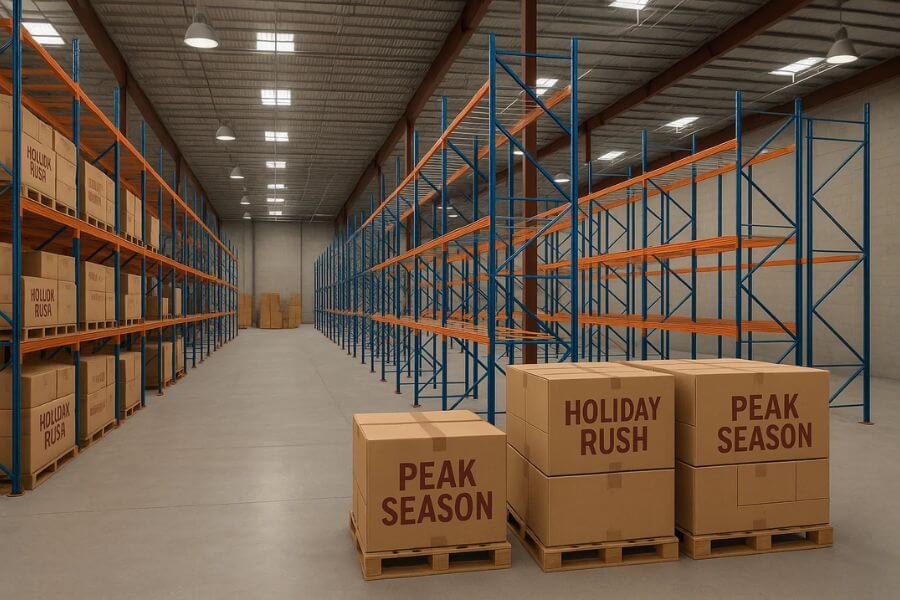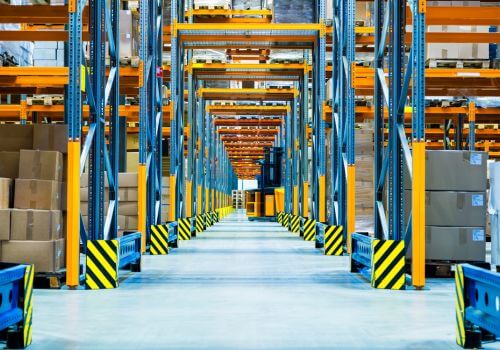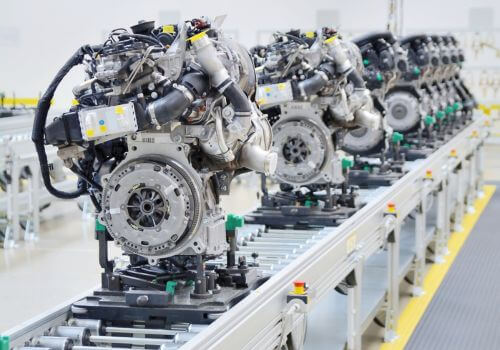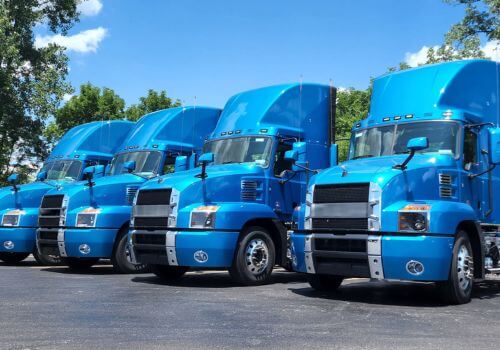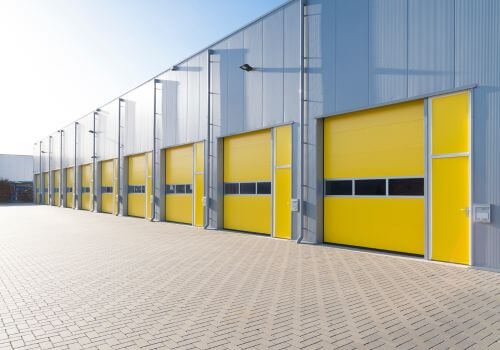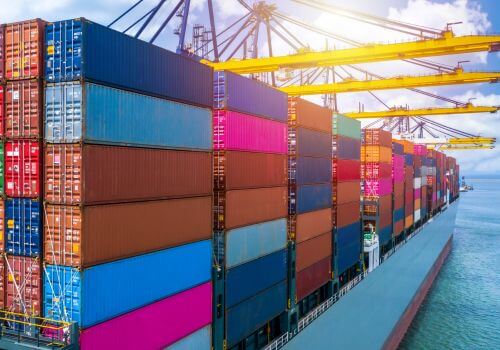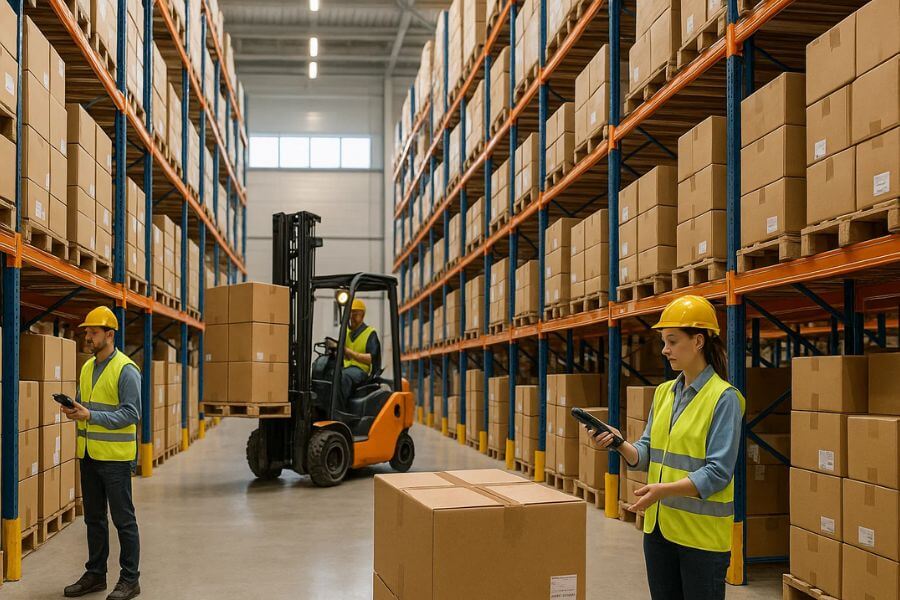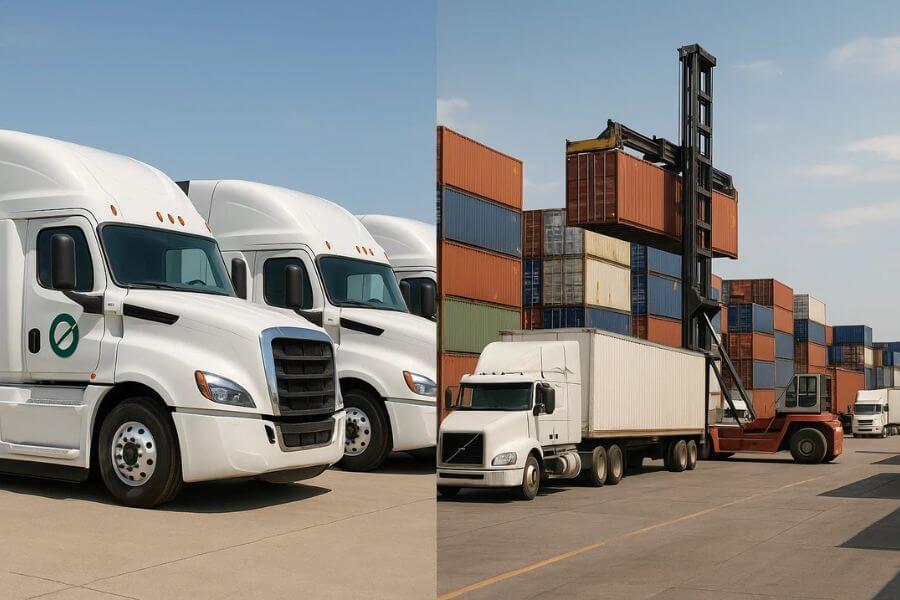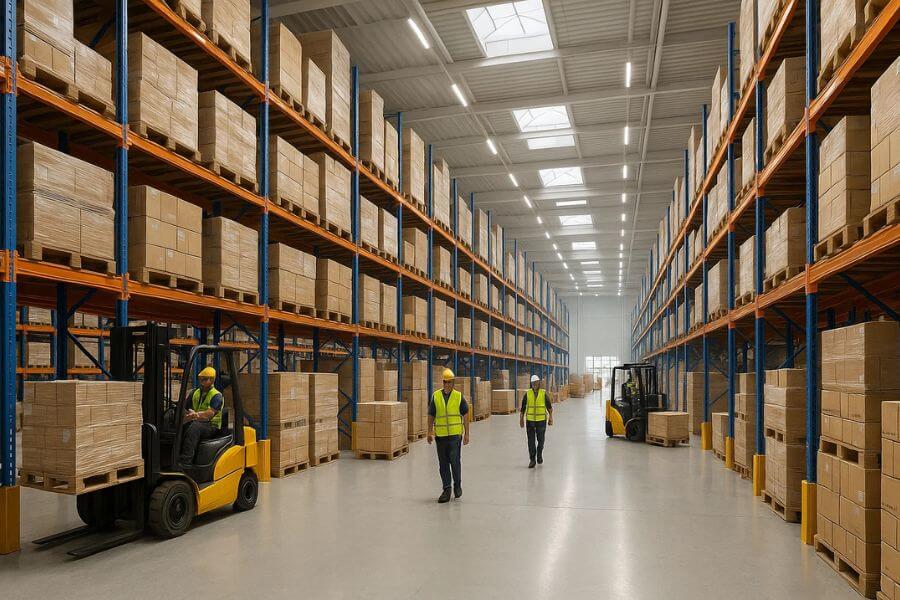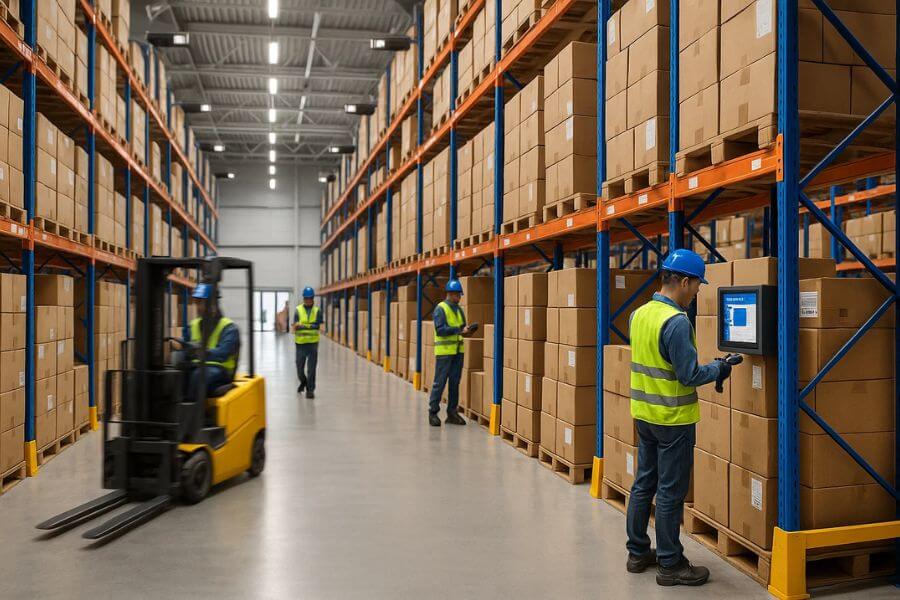As your business grows, peak seasons can be both exciting and overwhelming. Whether it’s Black Friday, Cyber Monday, holiday shopping, or back-to-school sales, order volume often surges dramatically. If your supply chain isn’t prepared, it can lead to shipping delays, stockouts, frustrated customers, and lost revenue.
This is where Third-Party Logistics (3PL) warehousing comes into play.
3PL warehousing offers the infrastructure, expertise, and scalability needed to help businesses manage seasonal spikes effectively. From advanced inventory management to flexible labor and faster shipping, a reliable 3PL can help you maintain high performance and customer satisfaction, even during the busiest times of the year.
In this article, we’ll explore 10 ways 3PL warehousing helps businesses scale during peak seasons, so you can handle high demand without compromising on service quality.
1. Scalable storage capacity for high inventory volumes
One of the biggest logistical challenges of peak season is inventory management. Businesses often need to purchase and store significantly more stock in anticipation of a surge in demand. Managing that influx internally can strain limited warehouse space or force companies to make last-minute compromises, either by understocking or paying for emergency storage.
How 3PLs help:
- 3PL warehousing gives you on-demand storage capacity, allowing you to scale your space usage based on real-time inventory needs.
- Instead of locking into long-term warehouse leases, 3PLs provide flexible warehousing agreements, so you only pay for the space you use.
- With multiple warehouse locations, many 3PLs offer distributed inventory placement, which allows you to store goods closer to your customers and reduce shipping time and costs.
Scalability ensures your operations remain efficient, even as your inventory volume fluctuates throughout the season.
2. Advanced inventory management systems for real-time control
Trying to manually manage your inventory during peak season is a recipe for errors. From mis-picks to overselling, the margin for error shrinks when orders flood in. A 3PL’s technology infrastructure is specifically designed to avoid these pitfalls.
How 3PLs help:
- Most reputable 3PLs use cloud-based warehouse management systems (WMS) that offer full visibility into inventory levels across multiple fulfillment centers.
- These systems sync directly with your ecommerce store, ensuring real-time updates on inventory, order status, and tracking numbers.
- They include demand forecasting and inventory replenishment tools that help you plan proactively and avoid both stockouts and overstocking.
With this level of automation and transparency, you can focus on strategy rather than micromanagement.
3. High-speed, high-volume fulfillment capabilities
Timely fulfillment is non-negotiable during peak season. Customers expect their orders to arrive within a few days (or less), and even minor delays can lead to cart abandonment, negative reviews, and brand damage.
How 3PLs help:
- 3PLs are built to process thousands of orders per day, using optimized picking methods like wave picking, zone picking, and batch picking to improve speed and accuracy.
- Orders are routed to the nearest fulfillment center for faster delivery and reduced transit costs.
- Many 3PL warehouses are equipped with automation technologies, including barcode scanning, robotic sorting, and conveyor systems.
This efficiency ensures that your customers receive their packages on time, even when order volumes skyrocket.
4. Flexible, on-demand labor that scales with demand
Hiring, training, and managing a temporary workforce during seasonal peaks is not only expensive but also operationally complex. Errors from untrained workers can lead to incorrect orders and unhappy customers.
How 3PLs help:
- 3PL providers maintain a flexible labor pool that expands during peak seasons and contracts during slower periods.
- Their teams are already trained in fulfillment processes, reducing the risk of packing mistakes and shipping delays.
- Labor costs are typically included in your per-order fulfillment fees, so you don’t have to manage hourly wages, insurance, or compliance.
This labor flexibility allows your business to handle demand spikes without stretching your internal resources thin.
5. Reduced shipping costs through bulk carrier discounts
Shipping costs tend to increase dramatically during peak seasons due to high demand, fuel surcharges, and last-minute fulfillment. For smaller businesses, absorbing these costs or passing them on to customers can be a serious competitive disadvantage.
How 3PLs help:
- Most 3PLs negotiate volume discounts with major carriers like UPS, FedEx, and USPS, which they pass on to their clients.
- With multi-location shipping, orders can be fulfilled from the warehouse closest to the customer, reducing shipping zones and transit time.
- Some 3PL platforms offer dynamic rate shopping that automatically selects the lowest-cost shipping option based on delivery preferences and location.
This cost-efficiency translates to better margins for your business and better rates for your customers.
6. Lower risk of stockouts and backorders
During peak periods, stockouts can kill momentum, frustrate customers, and result in lost sales. But overstocking can tie up capital and warehouse space. Striking the right balance is key.
How 3PLs help:
- With real-time inventory tracking and low-stock alerts, 3PLs help you monitor your inventory across multiple locations.
- Advanced analytics help forecast demand trends based on past sales, promotional events, and current buying behavior.
- Many 3PLs offer just-in-time inventory solutions, allowing you to replenish stock without keeping too much inventory on hand.
With smarter inventory control, you avoid the dual pitfalls of missed sales and excess holding costs.
7. Efficient returns management for reverse logistics
Returns are a natural part of ecommerce, especially after peak season events like the holidays. But if not handled properly, they can create customer dissatisfaction and logistics headaches.
How 3PLs help:
- Many 3PLs offer end-to-end returns processing, including label generation, product inspection, restocking, and refund coordination.
- Returned items can be reintegrated into sellable inventory more quickly, reducing waste and improving efficiency.
- Some providers offer branded return portals that enhance the customer experience and maintain trust.
A streamlined return process ensures customer loyalty even when the product doesn’t work out.
8. Seamless technology integration across platforms
When sales come in from multiple channels, your website, Amazon, Etsy, Walmart, etc., keeping everything coordinated can be difficult during peak seasons.
How 3PLs help:
- 3PLs offer multi-channel integrations that sync all of your sales platforms with your fulfillment and inventory systems.
- Centralized dashboards provide a single source of truth for order processing, tracking, and stock levels.
- APIs and plugins make it easy to customize workflows, automate tasks, and scale faster.
Technology integration reduces human error and ensures that nothing falls through the cracks, even at peak capacity.
9. Enhanced customer satisfaction and brand reputation
Every successful peak season ultimately comes down to one thing: the customer experience. Timely delivery, accurate orders, easy returns, and reliable communication are the foundation of loyalty.
How 3PLs help:
- Orders are fulfilled faster, more accurately, and with trackable shipping updates that improve customer transparency.
- Some 3PLs offer value-added services, such as branded packaging, custom inserts, and gift-wrapping, which enhance the unboxing experience.
- Efficient order handling minimizes customer complaints and refunds, allowing your support team to focus on proactive service rather than damage control.
By improving the experience from order to delivery, your brand can stand out even in competitive peak-season markets.
10. More time to focus on growth and strategy
The biggest benefit of all? Outsourcing your warehousing and fulfillment to a trusted 3PL partner gives you back time, something that’s always in short supply during peak season.
How 3PLs help:
- With logistics, shipping, and returns off your plate, you can concentrate on marketing, promotions, customer service, and product development.
- Your internal teams stay agile, focused, and less prone to burnout.
- You gain a scalable infrastructure without needing to build one yourself, saving time, money, and resources.
A 3PL acts as a strategic growth partner, giving you the freedom to focus on scaling your business while they handle the operational complexities.
Conclusion
Peak seasons present massive opportunities for growth, but only if your business is equipped to handle them. By partnering with a reliable 3PL warehousing provider, you gain access to scalable storage, expert logistics, fast fulfillment, and advanced technology without investing in your own infrastructure.
From reducing costs to improving customer satisfaction, the benefits of 3PL warehousing go far beyond storage. It’s a strategic growth lever that enables you to scale fast, compete better, and stay agile in a constantly changing market.
If your business is gearing up for its next busy season, now is the time to explore how 3PL warehousing can help you succeed.
Frequently asked questions about 3PL warehousing for peak seasons
Q1. When should I start working with a 3PL before a peak season?
A1. Ideally, begin planning at least 2-3 months in advance of your expected peak to ensure smooth onboarding and inventory transfers.
Q2. Is 3PL warehousing cost-effective for small businesses?
A2. Yes. Many 3PLs offer scalable, pay-as-you-go pricing, making them accessible to SMBs looking to grow without heavy investments.
Q3. Can a 3PL handle custom packaging during the holidays?
A3. Most 3PLs provide value-added services like gift wrapping, custom packaging, and kitting, ideal for seasonal promotions and branded experiences.
Q4. What happens if my order volume drops after the holidays?
A4. You can easily scale down your usage, avoiding fixed costs and paying only for what you use, keeping your business agile year-round.
Q5. How do I choose the right 3PL for my business?
A5. Look for 3PLs with peak-season experience, technology integrations, strong carrier relationships, and a track record of scalable success.

